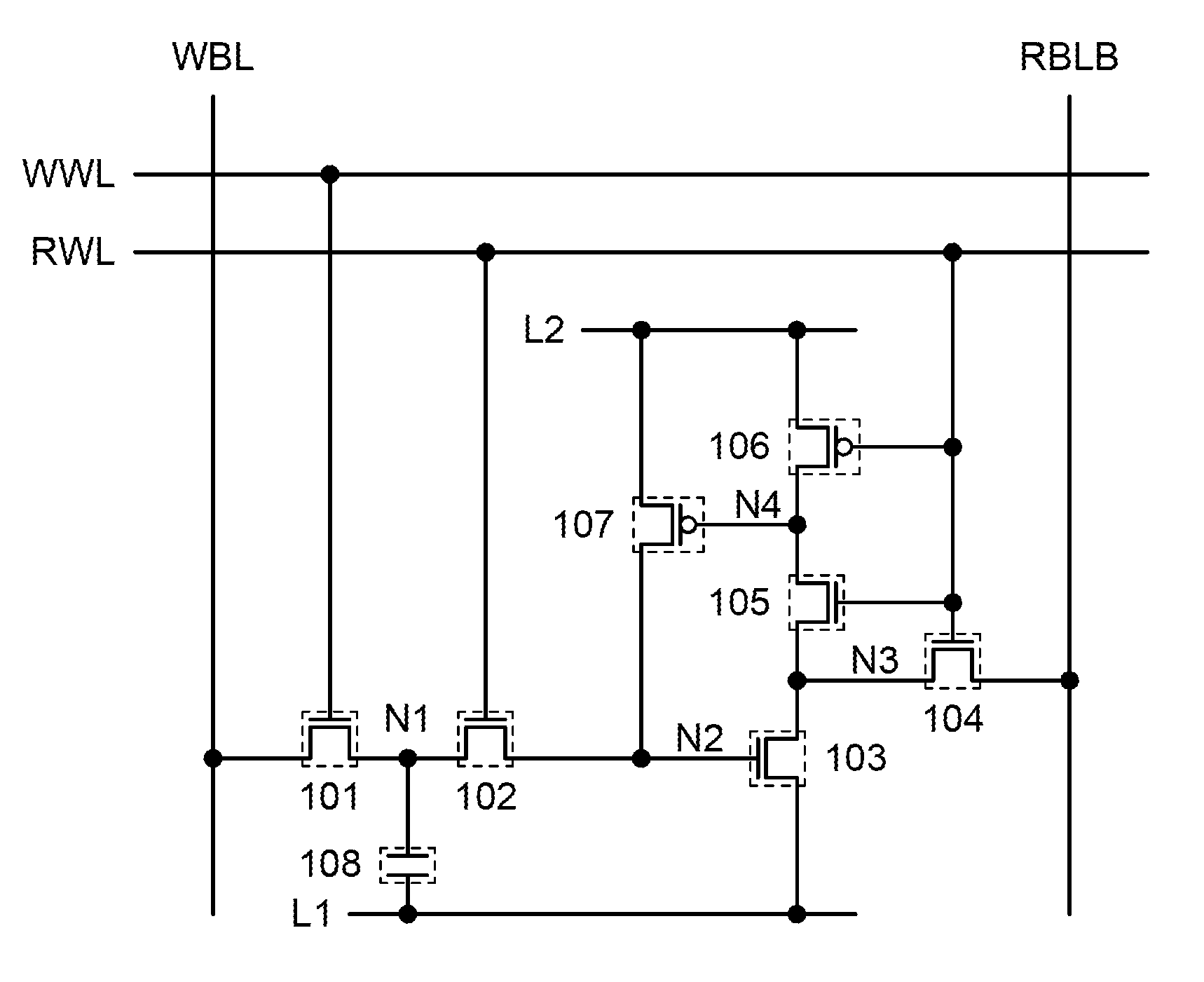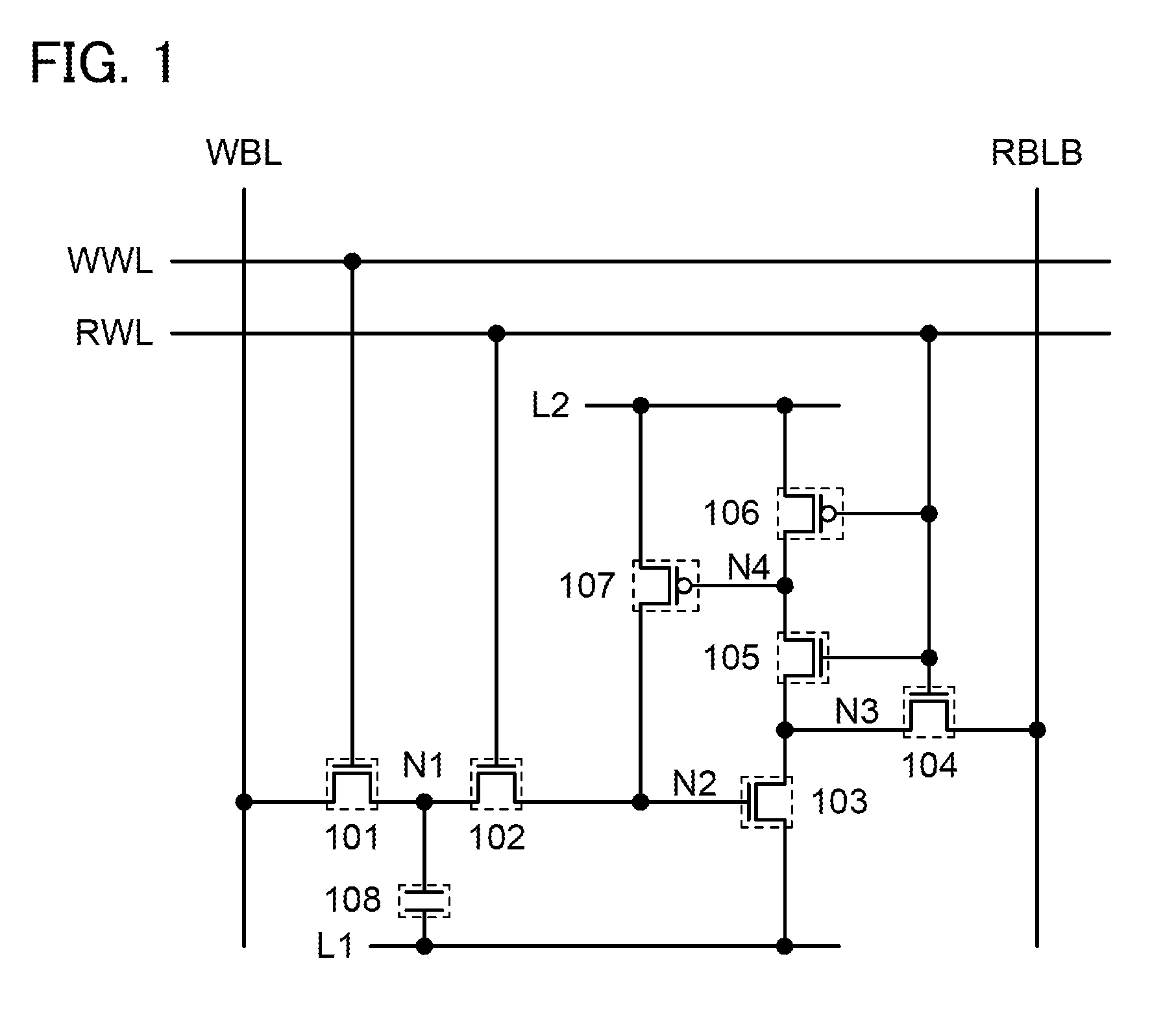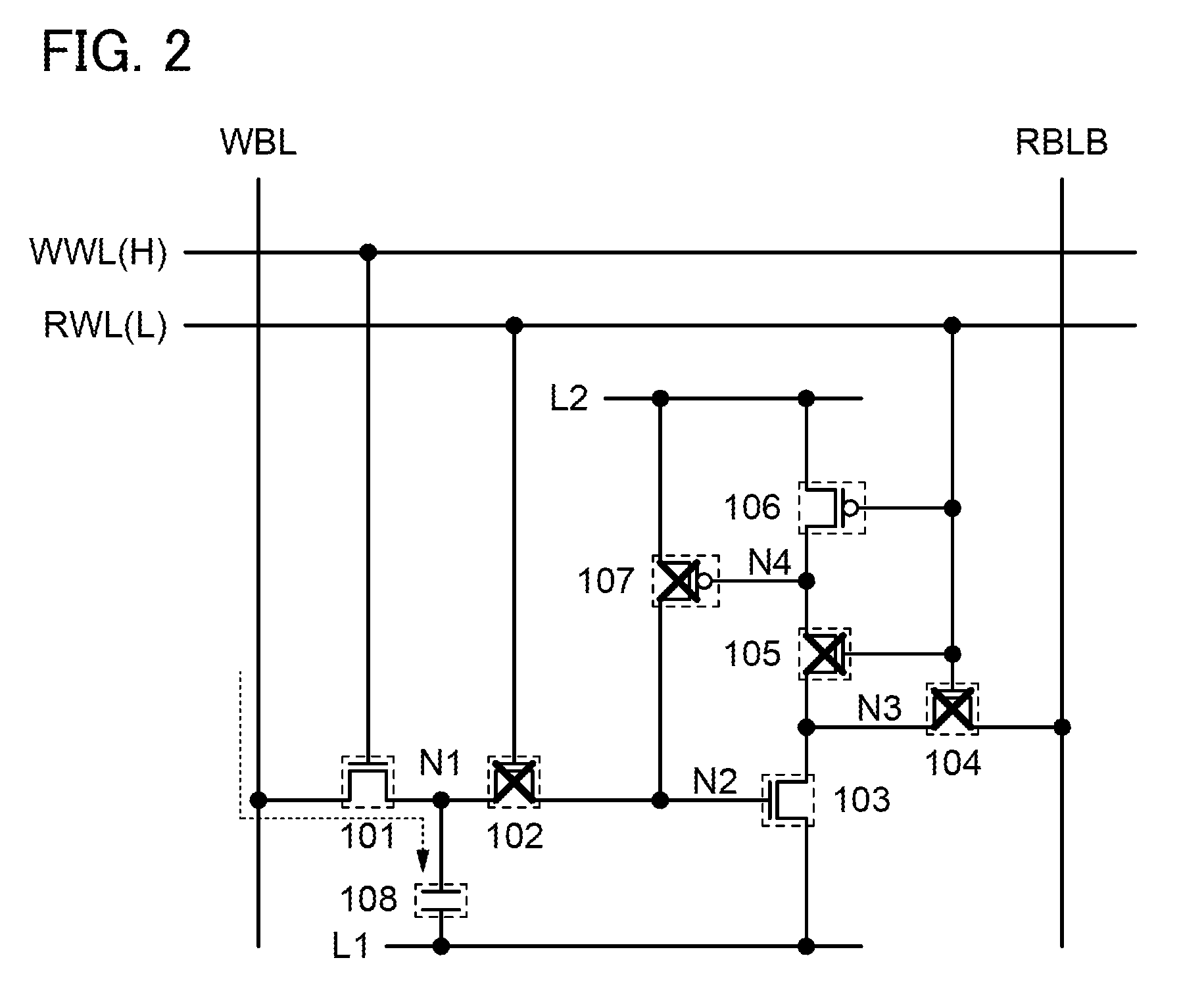Memory cell including transistor and capacitor
a memory cell and capacitor technology, applied in semiconductor devices, digital storage, instruments, etc., can solve the problems of power supply voltage, standby current, memory size, power supply voltage, etc., and achieve the effect of reducing standby current, reducing size, and lowering power supply voltag
- Summary
- Abstract
- Description
- Claims
- Application Information
AI Technical Summary
Benefits of technology
Problems solved by technology
Method used
Image
Examples
embodiment 1
[0075]In this embodiment, a memory cell and a semiconductor storage device that can include the memory cell are described. Note that the memory cell is also referred to as a semiconductor device. In addition, the semiconductor storage device is also referred to as a semiconductor device.
[0076]First, a memory cell structure is described with reference to a circuit diagram of a memory cell in FIG. 1.
[0077]The memory cell in FIG. 1 includes transistors 101 to 107 and a capacitor 108.
[0078]The conductivity types of the transistors 101 to 107 are not limited as long as the following operation can be performed. Note that for convenience, the transistors 101 to 105 are n-channel transistors, and the transistors 106 and 107 are p-channel transistors.
[0079]A first terminal of the transistor 101 is connected to a wiring WBL. A gate of the transistor 101 is connected to a wiring WWL. A first terminal of the transistor 102 is connected to a second terminal of the transistor 101. A gate of the t...
embodiment 2
[0157]In this embodiment, a memory cell different from the memory cell in Embodiment 1 is described. Note that components in common with those in Embodiment 1 are denoted by the same reference numerals, and description thereof is omitted. In addition, the description of Embodiment 1 can be applied to a memory cell in this embodiment.
[0158]First, a memory cell in FIG. 10 differs from the memory cell in FIG. 1 in that a transistor 109 whose first terminal is connected to the wiring L1, whose second terminal is connected to the node N2, and whose gate is connected to the wiring WBL is provided. The on or off state of the transistor 109 is controlled by the signal VWBL.
[0159]An operation example of the memory cell in FIG. 10 is described. Before the start time of a data read period, i.e., in a data write period or a data retention period, to turn on the transistor 109, the signal VWBL is set at a potential (e.g., high level) at which the transistor 109 is turned on. When the transistor ...
embodiment 3
[0220]In this embodiment, a semiconductor device is described. The semiconductor device in this embodiment can be applied to the RBLB driver circuit 240 in FIG. 6.
[0221]First, the structure of the semiconductor device is described with reference to a circuit diagram of a semiconductor device in FIG. 26.
[0222]The semiconductor device in FIG. 26 includes a precharge circuit 300, a sense amplifier 310, and a data latch circuit 320. The precharge circuit 300 is connected to the wiring RBLB, a wiring RBLA, a wiring RPC, and a wiring L3. The sense amplifier 310 is connected to the wiring RBLB, the wiring RBLA, a wiring SA, a wiring L4, and a wiring L5. The data latch circuit 320 is connected to the wiring RBLB, the wiring RBLA, and a wiring RBL.
[0223]The signal VRBLB is input to the wiring RBLB. The signal VRBLB is controlled by data read from a memory cell.
[0224]A signal VRPC is input to the wiring RPC. The signal VRPC controls the precharge circuit 300 and has two states (active and ina...
PUM
 Login to View More
Login to View More Abstract
Description
Claims
Application Information
 Login to View More
Login to View More - R&D
- Intellectual Property
- Life Sciences
- Materials
- Tech Scout
- Unparalleled Data Quality
- Higher Quality Content
- 60% Fewer Hallucinations
Browse by: Latest US Patents, China's latest patents, Technical Efficacy Thesaurus, Application Domain, Technology Topic, Popular Technical Reports.
© 2025 PatSnap. All rights reserved.Legal|Privacy policy|Modern Slavery Act Transparency Statement|Sitemap|About US| Contact US: help@patsnap.com



